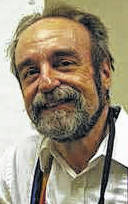
By the 1950s, astronomers had developed several methods in the discipline of astrometry, determining the distances to and motions of the stars in our Milky Way.
Those methods included the use of Cepheid variable stars, which vary in their brightness in such a way as to reveal their true or intrinsic brightness. Once astronomers determine a Cepheid’s intrinsic brightness, they can see its distance and position in the Milky Way.
In addition, astronomers looked for clouds of hydrogen gas. By measuring the speed and direction of their motion, astronomers could then place them in a dynamic model of the Milky Way’s structure.
Other methods include measuring the distance to open star clusters by measuring the motions of individual stars within the cluster.
Astronomers can also use what they know about astronomical events, like recurring nova explosions, to determine distance by gauging the stars’ actual, “intrinsic,” brightnesses.
Finally, astronomers can infer a star’s intrinsic brightness and distance from its type, age, and stage of development.
Combining all those techniques, astronomers concluded that the Milky Way had spiral arms emanating from a central hub.
The most reliable method for determining the distance to stars is parallax, pioneered by the second-century BCE Greek astronomer Hipparchus of Nicaea to determine the distance to Earth’s moon.
By measuring the apparent change of position of a star at opposite sides of Earth’s orbit, astronomers can determine the distances to that star using simple trigonometry.
However, parallax is somewhat limited because of turbulence in Earth’s atmosphere.
Atmospheric turbulence limits the parallax method to stars a few hundred light years, severely limiting astronomers’ ability to measure the structure of the Milky Way, a flattened spiral about 100,000 light-years wide.
Launching a satellite into space above the Earth’s atmosphere is the obvious, if expensive, solution.
Thus, in 1989, the European Space Agency launched Hipparcos, an acronym for High Precision Parallax Collecting Satellite and a tribute to the Greek astronomer who pioneered the technique over 2,000 years ago.
The results of its four years of operation were two stellar catalogs. The Hipparcos Catalogue contains 118,218 entries.
The later Tycho 2 Catalog contains astrometric data for over two million stars, an astounding number until one considers that the Milky Way consists of perhaps 200 billion stars.
The Tycho 2 Catalogue thus covers a scant percentage of the Milky Way’s stars, most within 1,000 light-years of our Earth and Sun.
As a result, In 2013, ESA launched Gaia, a second astrometric satellite. Gaia improved on Hipparcos in three ways.
The surfaces of its two light-gathering mirrors collect more than 30 times the light compared with Hipparcos.
Gaia measures a star’s distance and motion 200 times more accurately than Hipparcos. Because of its two-mirror optical design and position outside Earth’s atmosphere, the telescope can resolve two stars only .5 arc seconds apart. (A full circle contains 1,296,000 arc seconds.)
According to the Gaia/ ESA website, “…if Hipparcos could measure the angle that corresponds to the height of an astronaut standing on the Moon, Gaia will be able to measure his thumbnail!”
Also on board Gaia is a nearly one-billion-pixel digital camera, the largest ever launched into space.
The result of that mirror and camera combination is that Gaia detects celestial objects a million times fainter than the human eye.
Finally, Gaia is not in orbit around Earth. Instead, the satellite is located at the L2 Lagrange point, about one million miles outside Earth’s orbit and orbiting the sun in a parallel orbit to Earth’s. Getting Earth out of the way makes it far easier to plot stellar positions over the entire sky.
Gaia also determines the star’s motion in space using the star’s Doppler shift, as measured from the shifted positions of the color bands in its spectrum.
As a result, during its 11 years of operation, Gaia has plotted the positions and motions of 1.8 billion stars, approaching a respectable one percent of the stars in the Milky Way. The spacecraft has measured virtually every star at least 70 times.
The Gaia data has helped to produce the first genuinely granular maps of the Milky Way.
Next week: We map our current knowledge of the Milky Way and end our long Milky Way journey.
Tom Burns is the former director of the Perkins Observatory in Delaware.

